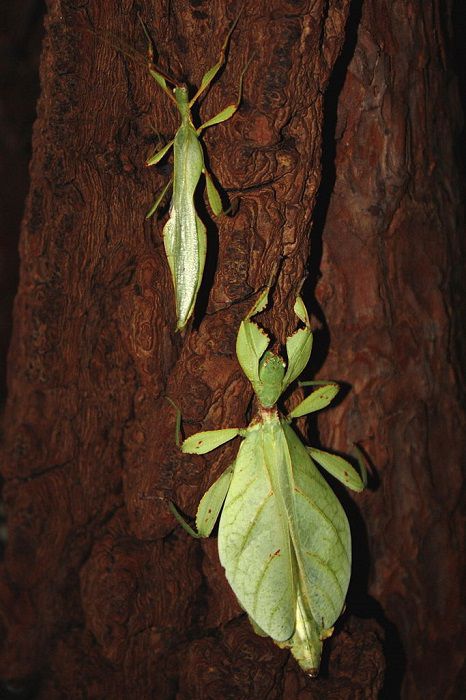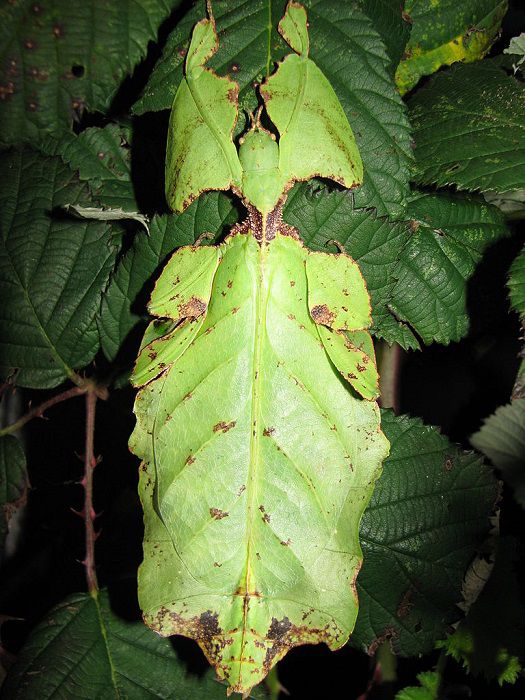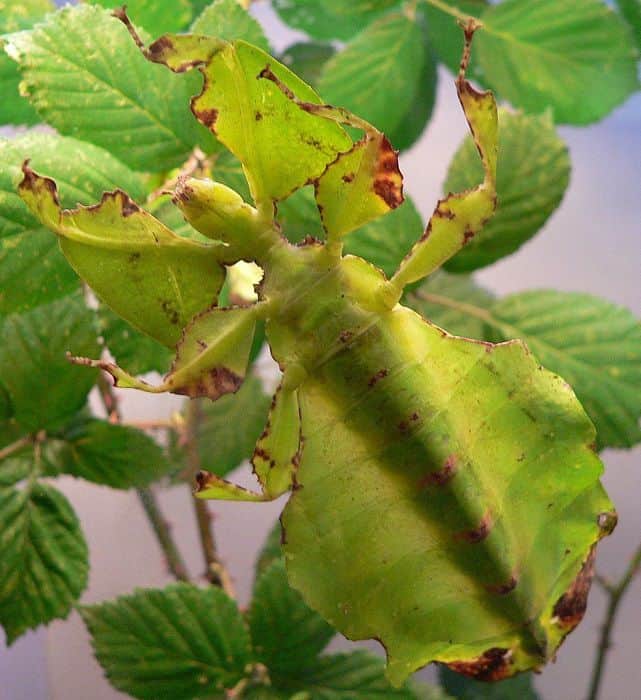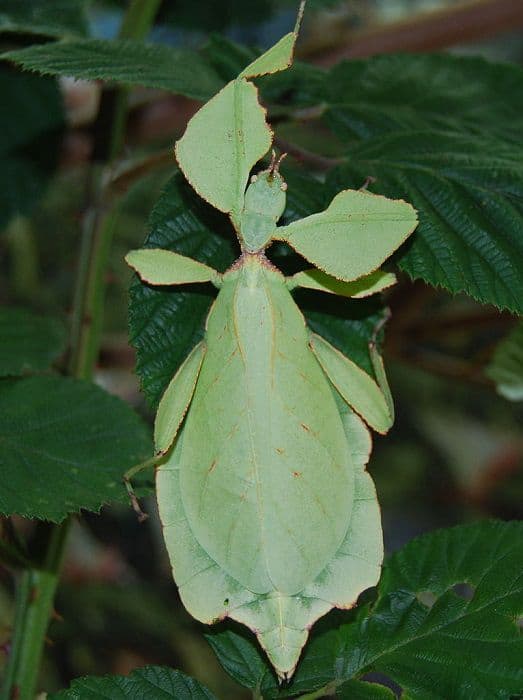Table of Contents
Those considering a leaf insect as a pet often have questions before taking the plunge. These fascinating creatures may not be considered your everyday type of pet, but for those who suffer from allergies or who just don’t have the time to care for ‘traditional’ pets such as dogs, cats, hamsters, and rabbits, the leaf insect is a perfect alternative.
Low maintenance and cheap to buy, leaf insects also make for fantastic starter pets for kids. They are quiet and do not require a major amount of responsibility on the part of the child. These insects eat plants that can be found in your own backyard or in a nearby park or woodland, and setup is inexpensive considering they can easily be housed in a large plastic tub with some holes poked into the lid for ventilation. For those interested in a leaf insect as a pet , here are the answers to some frequently asked questions about these creatures.
, here are the answers to some frequently asked questions about these creatures.
Can Leaf Insects Fly?
Both male and female leaf insects have wings, but although females have large broad wings on their back, they do not have underwings which they need to fly. Males on the other hand have smaller forewings on their backs but also have hindwings, which allow them to fly upon reaching adulthood.
Are Leaf Insects Nocturnal?
One thing you may have noticed if you already have leaf insects is that they rarely move about during the day. In fact, some might say they make for quite boring pets. This is because these are nocturnal insects and are typically active at night.
Being nocturnal allows them to avoid predators for the most part. While carnivorous predators are resting at night, leaf insects can move about eating leaves and then go back to hiding out during the day, mimicking real leaves.
and then go back to hiding out during the day, mimicking real leaves.

Phyllium jacobsoni 
Phyllium giganteum 
Phyllium bioculatum
How Long Do Leaf Insects Live?
When leaf insects hatch from eggs laid by the female, they look like smaller versions of the adults. They will though go through a number of molts before reaching adulthood. For the most part, these insects will live for around twelve months from the time of hatching. However, in captivity and with the right environment and care, they might live longer.
Can Leaf Insects Live with Stick Insects?
Although leaf insects and stick insects are both phasmids, they should not be kept together in captivity. The reason for this is that stick insects also eat leaves but have been known to bite and try to eat leaf insects as they mistake them for leaves, but especially so if the sticks run out of ‘real’ food.
Can Leaf Insects be Handled?
It is best to only handle a leaf insect when and if absolutely necessary, such as when moving it from one location to another to clean the tank. These creatures are not really interactive pets and are mainly for observation. If you do need to handle them, it is best to coax them forward onto your hand before gently placing them down again. Leaf insects are very fragile and could easily lose a limb if you are not careful.
when and if absolutely necessary, such as when moving it from one location to another to clean the tank. These creatures are not really interactive pets and are mainly for observation. If you do need to handle them, it is best to coax them forward onto your hand before gently placing them down again. Leaf insects are very fragile and could easily lose a limb if you are not careful.
Do Leaf Insects Need Heat?
The temperature of a leaf insect’s enclosure should be between 77F and 86F, so you might need to invest in a heat pad to achieve these temperatures (check out a selection of heat pads here on Amazon – opens in a new tab). It is alright for the temperature to drop slightly at night. Heat mats can be placed underneath the tank and they will then create an artificial heat to keep your leaf insects warm.
– opens in a new tab). It is alright for the temperature to drop slightly at night. Heat mats can be placed underneath the tank and they will then create an artificial heat to keep your leaf insects warm.
The above are just a few of the questions you might have regarding leaf insects. If you have any other questions, please do not hesitate to get in touch with us and we will do our best to provide you with the answer as soon as possible.
- Photo Credits:
- Featured Image (Phyllium westwoodii): Daniel Dittmar – This file is licensed under the Creative Commons
 Attribution 3.0 Unported
Attribution 3.0 Unported license.
license. - Phyllium jacobsoni: Drägüs
 – the copyright holder of this work released this work into the public domain
– the copyright holder of this work released this work into the public domain .
. - Phyllium giganteum: Drägüs
 – This file is licensed under the Creative Commons
– This file is licensed under the Creative Commons Attribution-Share Alike 3.0 Unported
Attribution-Share Alike 3.0 Unported , 2.5 Generic
, 2.5 Generic , 2.0 Generic
, 2.0 Generic and 1.0 Generic
and 1.0 Generic license.
license. - Phyllium bioculatum: Public domain.

